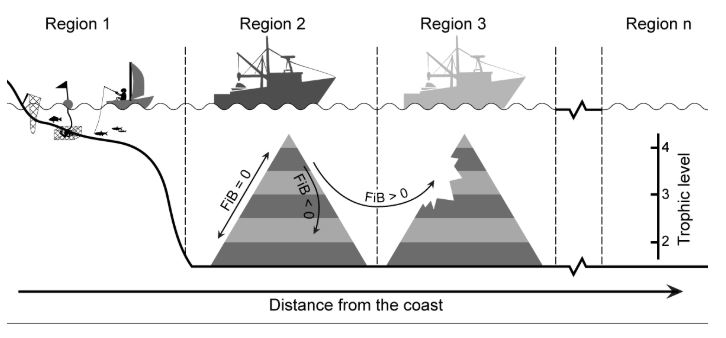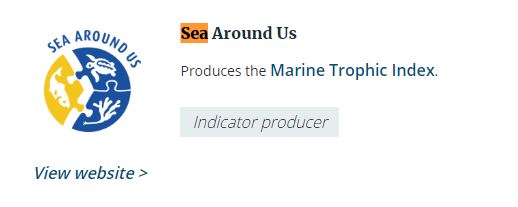
Schematic representation of changes in MTI and FiB index given differing modes of exploitation of coastal resources.
The Sea Around Us is pleased to announce that the Marine Trophic Index (MTI) has been officially included in the list of Sustainable Development Goals (SDGs) proxy indicators.
The Sustainable Development Goals are a collection of 17 global goals set by the United Nations General Assembly in 2015 for the year 2030. One of the goals, number 14, is very relevant to our research initiative as it refers to (conserving) Life Below Water.
One of the targets within goal 14, namely target 14.2, proposes the following: “By 2020, sustainably manage and protect marine and coastal ecosystems to avoid significant adverse impacts, including by strengthening their resilience, and take action for their restoration in order to achieve healthy and productive oceans.” According to the Biodiversity Indicators Partnership, the MTI serves as a proxy to monitor progress against target 14.2. This is why the indicator was included in the list.
The Marine Trophic Index is calculated from catch composition data collected by the Food and Agricultural Organization of the United Nations (FAO) and it can be used to describe the complex interactions between fisheries and marine ecosystems and communicate a measure of species replacement indices by fisheries.
The Sea Around Us has calculated the MTI for the Exclusive Economic Zone (EEZ) of each maritime country in the world and for all Large Marine Ecosystems (LME), from 1950 to present. The indicator can be applied at different scales from global to subnational (e.g. portion of the EEZ of a country).
The data, although catch based, can be disaggregated into different taxonomic classifications from very broad groupings (e.g. fish, crustaceans and molluscs) to habitat-based fish (demersal, bathydemersal, etc.) to species and genus.



